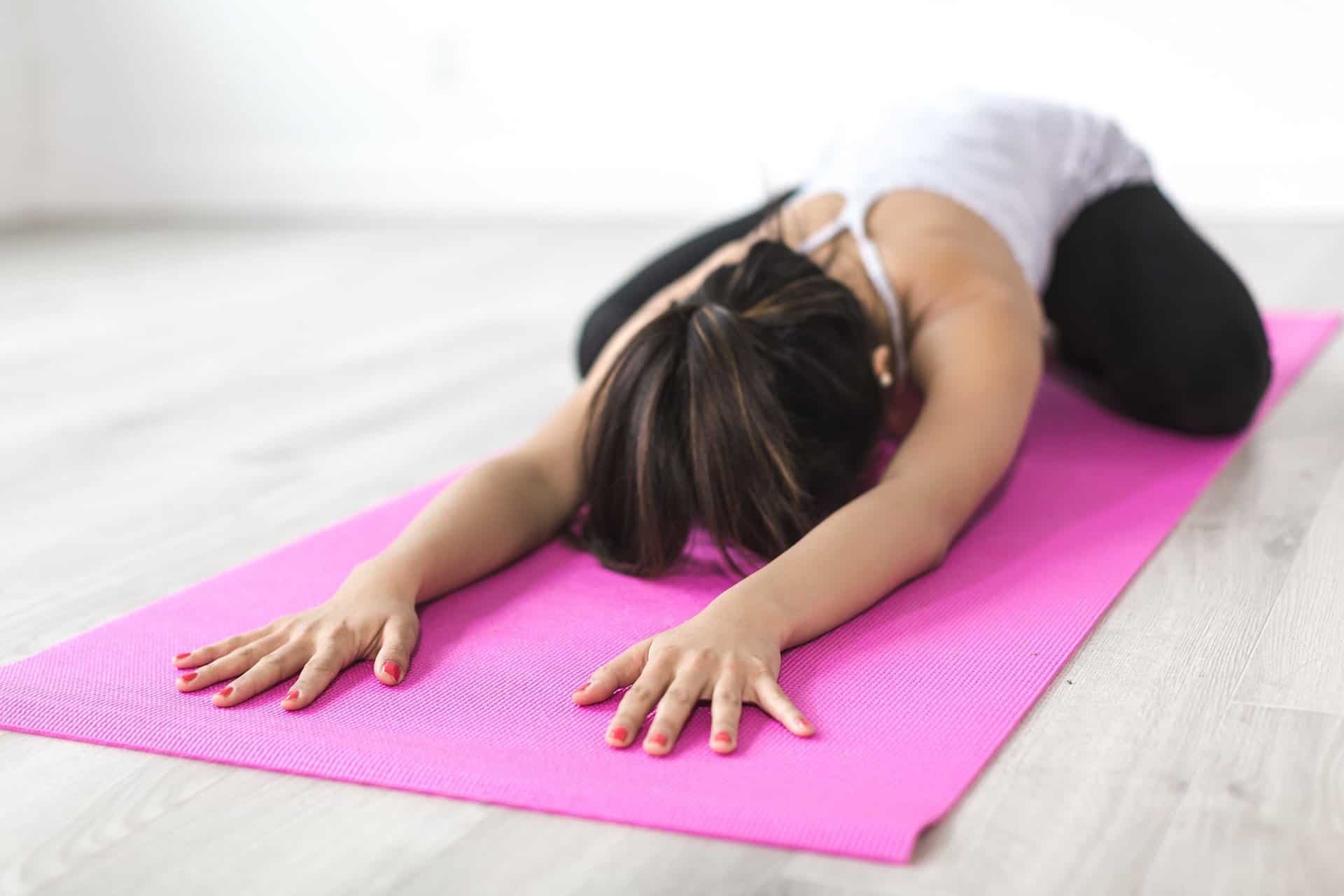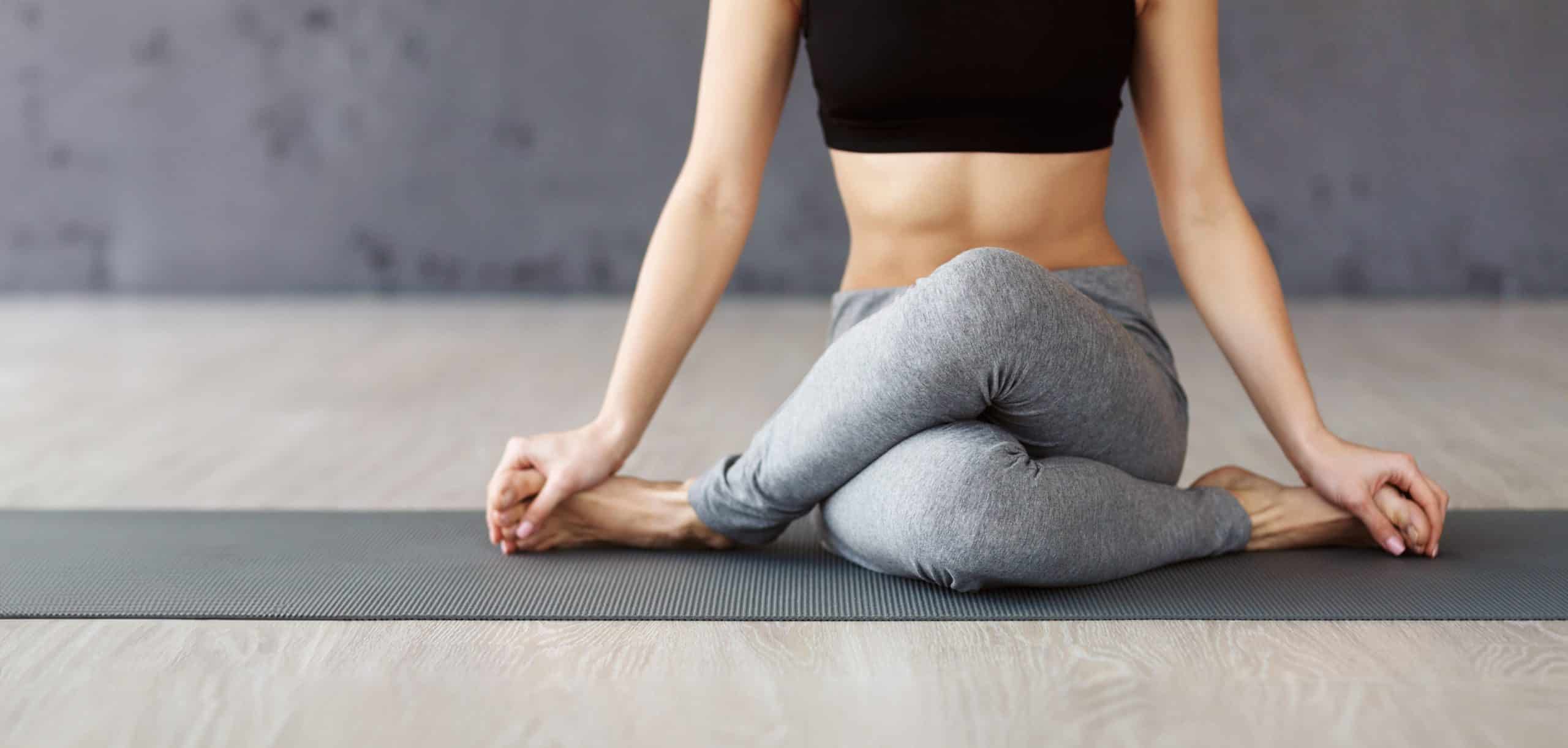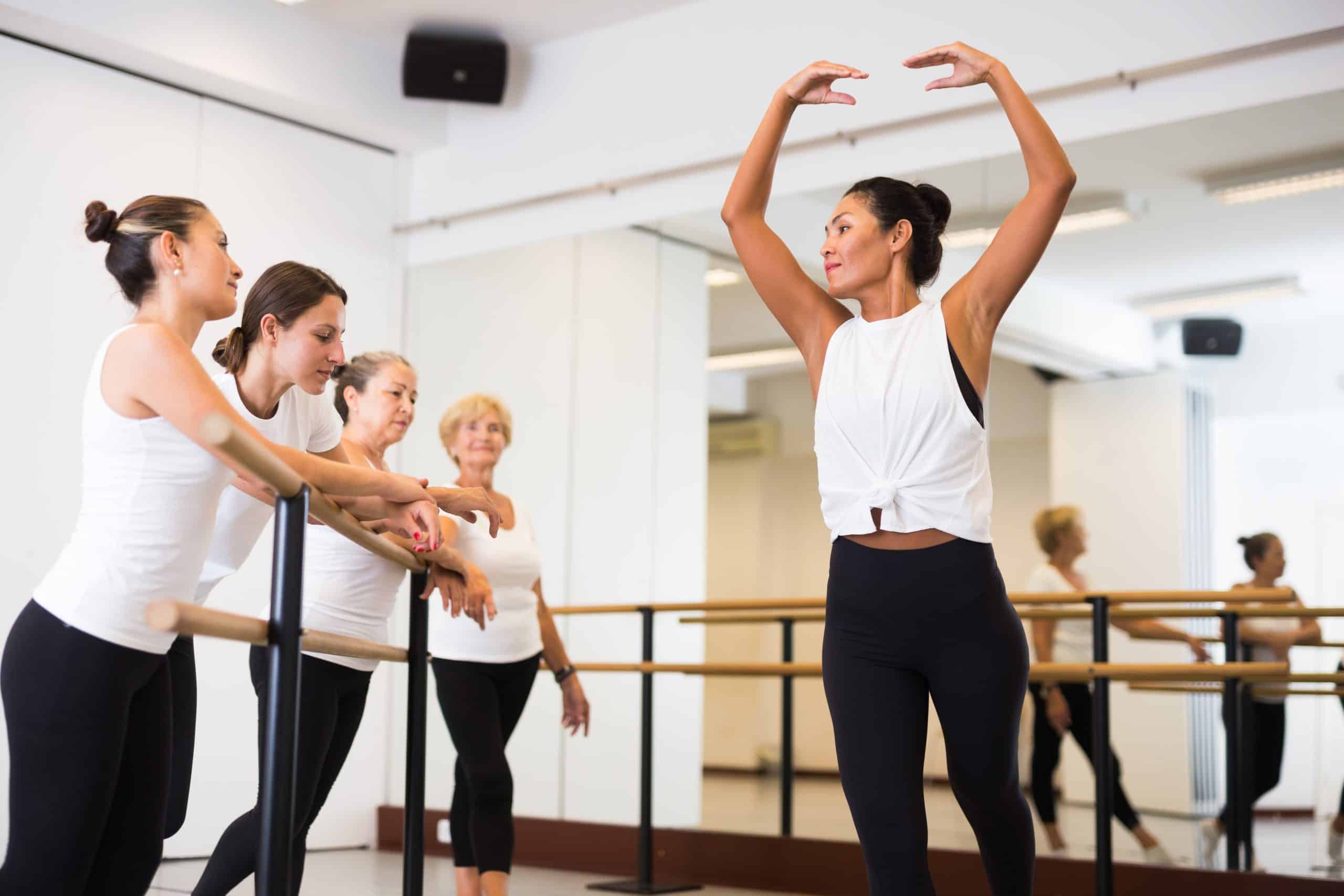Many people suffer from a range of pelvic floor issues, including pelvic pain, incontinence, and organ prolapse. Such symptoms can greatly affect one’s quality of life.
When the pelvic floor muscles are too tight, their functionality is affected. And because they are working in a constricted state, they weaken. Fortunately, exercises can help ease the tension and improve their functionality. This article explores how to relax pelvic floor muscles using pelvic floor exercises.
The Pelvic Floor
About one in five people will suffer from a pelvic floor disorder throughout their lifetime. In fact, about one-quarter of American women are affected by pelvic floor disorders (7). Though more common among women, pelvic issues also affect men.
The pelvic floor muscles support the bladder, rectum, bowels, and uterus (in women). When these muscles contract, they lift the pelvic organs and tighten openings of the anus, urethra, and vagina. On the other hand, relaxation of this set of muscles allows the passage of urine and fecal matter. The pelvic muscles also are important for proper sexual function (10).
When pelvic floor muscles are weakened, damaged, or too tightened, a range of issues may occur, resulting in a pelvic floor disorder. The most common symptoms of pelvic dysfunction include urinary incontinence, fecal incontinence, bowel control issues, and pelvic organ prolapse.
Prolapse refers to the descending or dropping of an organ from its normal position. Pelvic organ prolapse occurs when pelvic organs such as the bladder or rectum dropdown. In women, the uterus, bladder, or rectum usually drop down into the vagina. Much as organ prolapse is not life-threatening, it can cause a lot of discomfort and pain.
When the pelvic floor muscles are too tight and unable to relax, it is referred to as a hypertonic pelvic floor (9). This can cause pain and even affect a person’s sexual experience. Fortunately, there are several forms of pelvic floor therapy, including exercises and massage, used to manage any symptoms of pelvic floor dysfunction.
Read More: Pelvic Floor Dysfunction Exercise: 5 Ways To Improve Your Muscle Strength
Are Your Pelvic Floor Muscles Too Tight?
The most common sign of your pelvic floor muscles being too tight is pelvic pain and muscle spasms (4). There are, however, several other symptoms one may experience as a result of tightening of the pelvic muscles.
Other symptoms include:
- Painful sex
- Constipation
- Vaginismus
- Slow flow of urine
- Urinary incontinence
- Hip or lower back pain
- Incomplete emptying of bowels
- Incomplete emptying of the bladder
While there is no defining cause of too tense pelvic floor muscles, several activities can cause it. For instance, individuals who spend a lot of time working out and working their core muscles can develop tension in their pelvic floor muscles.
High levels of stress, anxiety, or fear may also cause muscles to tighten, resulting in a hypertonic pelvic floor. Certain pelvic health conditions can also cause the pelvic floor muscles to tighten. For instance, women with endometriosis can cause inflammation and pelvic pain in the pelvic region. Other conditions include cystitis, irritable bowel syndrome, and vulvodynia, which may also cause pain in the pelvic regions.
Birth trauma could also be a cause. It is important to identify the cause of too-tight pelvic floor muscles. This might help in determining the best rehabilitation of pelvic floor dysfunction.
Whether you’re looking to simply pep up your fitness routine, jazz up your diet with mouth-watering low-calorie recipes or want to get your act together and significantly drop that number on your scale – the BetterMe app has got you covered! Improve your body and revamp your life with us!
How To Relax Tight Pelvic Floor Muscles?
One of the most effective ways to remedy this is exercises and stretches that focus on the pelvic floor muscles. A study conducted on women with endometriosis found that eight weeks of an exercise program was effective at postural abnormalities and pelvic pain as a result of the condition (1). Research shows that exercise and physical therapy are both effective at treating pelvic pain (5).
Other methods used to help relax your pelvic floor muscles include:
- Breathing techniques
- Massage therapy
- Use of vaginal dilators in women
- Pelvic and hip stretches
Having relaxed pelvic muscles means that the organs of the pelvic organs work smoothly. Pelvic floor exercises may be beneficial for men who experience erectile dysfunction and premature ejaculation (6). In Kegel exercise, men are most recommended to strengthen pelvic muscles. They also help women who experience painful sex.
Women are also able to experience more powerful orgasms. Relaxing these muscles also helps those who experience urine and fecal incontinence. Exercising and working your pelvic muscles helps you learn how to control your pelvic floor muscles at will.
Read More: Yoga Pelvic Floor Exercises To Fight Pelvic Floor Muscle Tightness, Weakness, And Dysfunction
How To Relax Pelvic Floor Muscles At Home?
Before you attempt any form of pelvic exercise, it is important to visit your GP so that they can rule out any underlying medical issues. But if you feel that your pelvic muscles are responsible for the spasms and pain, there are a few exercises and stretches you can try to help with these symptoms.
Below are several exercises to relax pelvic floor muscles that you can try:
Abdominal Breathing
This is often known as diaphragmatic or belly breathing. It is often used as a stress-relieving and relaxation technique but can also be beneficial for the pelvic floor muscles. When you inhale, your ribs expand, and the diaphragm flattens and lowers, moving organs downwards. The abdominal muscles and pelvic floor then lengthen and expand to make room for these organs (8).
To do this exercise:
- Lie on your back with your knees bent. Place your right hand on your chest and the left on your abdomen.
- Inhale deeply and imagine your belly filling with air like a balloon. The hand on your abdomen should rise while the other remains still.
- Move your breath down while lowering your pelvic floor, letting it relax and open.
- Transition smoothly to the next breath without a pause.
- Breathe out and let the air move out of your body without effort, beginning from the ribs then downwards to the pelvic floor.
- Ensure each breath is long and even. You can achieve this by counting. Inhale for three seconds, then exhale for three seconds. Do this for 5 minutes daily.
Stretch And Release
This simple routine helps relax your pelvic muscles. You don’t need any equipment for this. You can choose whether to use a mat or not.
To do this exercise:
- Kneel with your bottom resting on your heels. Place your forehead on the floor and let your hands rest on the floor.
- Bring your attention to your pelvic floor muscles.
- Breathe in and stretch the back of your shirt with your ribs. Relax the muscles surrounding your tailbone as air fills up your lungs.
- Exhale effortlessly.
- Do five breathing cycles in this position.
If you struggle to even flirt with the idea of giving up your favorite foods or working out till your legs give way – the BetterMe app is here to breathe a fresh perspective into the way you view the weight loss process! Check out the app and experience the fun side of fitness and dieting with BetterMe!
Reverse Kegels
Great pelvic floor exercises for women include reverse Kegels. These are the opposite of Kegels, which are very common, and most people swear by them to help strengthen the muscles (3). The reverse Kegels, on the other hand, stretch, lengthen, and relax pelvic floor muscles. If you have tried Kegels before, then doing reverse Kegels will be simple.
To do reverse Kegels:
- Get into a comfortable position. You can do this exercise while standing, sitting, or lying on your back with your knees bent.
- Once you are in a comfortable position, inhale deeply and focus on your pelvic floor. Feel your muscles relax, loosen, and relax as you breathe in.
- To identify the correct set of muscles, try imagining that you are urinating, then stop your urine flow midstream. It’s advised that you don’t do this when you are actually urinating.
- Your anus releases and moves downwards. If you are doing the reverse kegel correctly, you should feel the space between your tailbone and pubic bone expands.
- Hold for 5 seconds, and then release for 5 seconds. Once you are comfortable doing this movement, you can try holding and releasing for longer periods of about 10 seconds.
- Do ten reps of two to three sets daily.
Hip Stretch
This is a simple stretch that works both your hip and pelvic muscles. It is one of the best ways on how to relax pelvic floor muscles in females.
To do a hip stretch:
- Lie on your back with knees bent with the lower part of your foot touching the floor, then place one foot on the opposite knee.
- Lift the other leg and hold it around the thighs with both your arms.
- Draw your bottom leg in the direction of your chest to stretch your hip muscles.
- Hold for about 30 seconds while practicing your abdominal breathing.
- Repeat twice for each limb.
Happy Baby Pose
This stretch helps loosen the muscles inside and around the pelvic region (2). Other stretches you can try include the garland’s pose, child’s pose, or cobra pose. To get the most out of this stretch, do it daily.
For the happy baby pose:
- Lie flat on your back. While you breathe out, bend your knees so that the front part of your thighs touch your belly.
- Breathe in, then grip the outer side of your feet. If you find gripping your feet with your hands, hold on to a belt or band looped over each sole instead.
- Open your knees wider than your trunk and bring them towards your armpits.
- Position your ankles directly over your knees such that your shins are perpendicular to the ground.
- Slowly push your feet or belts into your hands as you pull your hands downwards to create some resistance.
The Bottom Line
Pelvic floor exercises are a great way to relax your pelvic floor muscles. You must consult with a doctor before you begin any extreme form of pelvic floor exercises. Remember that it may take some time to see the results of the exercises, so it is vital to be patient.
DISCLAIMER:
This article is intended for general informational purposes only and does not address individual circumstances. It is not a substitute for professional advice or help and should not be relied on to make decisions of any kind. Any action you take upon the information presented in this article is strictly at your own risk and responsibility!
SOURCES:
- Efficacy of exercise on pelvic pain and posture associated with endometriosis: within subject design (2017, ncbi.nlm.nih.gov)
- How to Do Happy Baby Pose: 3 Happy Baby Pose Modifications – 2021 (2021, masterclass.com)
- Kegel Exercises – StatPearls – NCBI Bookshelf (2021, ncbi.nlm.nih.gov)
- Pelvic Floor Muscle Relaxation for Men (n.d., pelvic pain.org.au)
- Pelvic pain rehabilitation (2018, ncbi.nlm.nih.gov)
- Randomised controlled trial of pelvic floor muscle exercises and manometric biofeedback for erectile dysfunction (2018, ncbi.nlm.nih.gov)
- Roughly One Quarter of U.S. Women Affected by Pelvic Floor Disorders (2008, nih.gov)
- The effect of the correlation between the contraction of the pelvic floor muscles and diaphragmatic motion during breathing (2015, ncbi.nlm.nih.gov)
- The hypertonic pelvic floor · Pelvic Floor First The hypertonic pelvic floor. What is a hypertonic pelvic (2019, pelvicfloorfirst.org.au)
- The Pelvic Floor – Structure – Function – Muscles (n.d., teachmeanatomy.info)


















